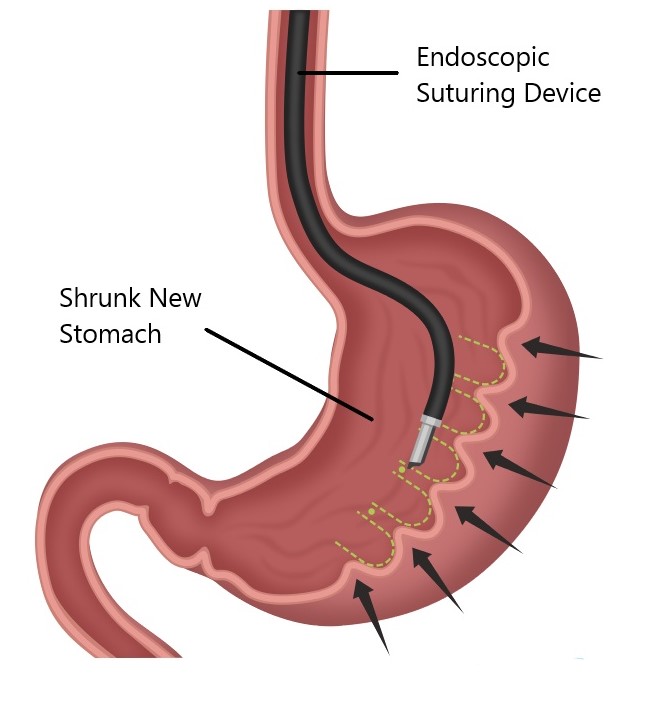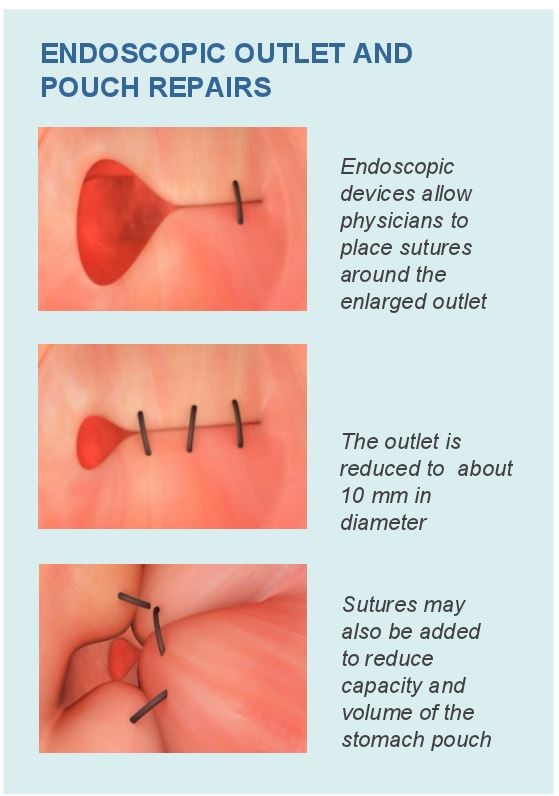Endoscopic Weight Loss Procedures
Endoscopic weight loss procedures are performed using a flexible scope through the mouth the same way as a standard outpatient upper scope procedure. With the use of a specialized device we are able to administer full thickness sutures. The most common side effects initially after the procedure are sore throat, upper abdominal discomfort, bloating, cramping and sometimes nausea. These are typically mild and treated with pain relievers and anti-nausea medication. These side effects are more pronounced for the first 48 hours.
When we talk about Endoscopic weight loss procedures, we are referring to two distinct procedures.
More About Endoscopic Sleeve Gastroplasty (ESG)
The Endoscopic Sleeve Gastroplasty or ESG is a non-invasive procedure that is performed using a flexible scope through the mouth the same way as a standard outpatient upper scope procedure.

With the use of a specialized device called the “Overstitch” we are able to administer approximately 5 - 7 full thickness sutures to decrease the size of your stomach by approximately 70%.
This procedure does not involve removal of any portion of the stomach which is different than the surgical approach called Sleeve Gastrectomy
Since your stomach is smaller in size, the amount of food that you can eat is limited. You will feel full quicker resulting in reduced portion size and also prolongs the time food remains in the stomach, extending the feeling of fullness.
The ESG configuration resembles a small pouch sitting atop a narrow sleeve.
More About Endoscopic Transoral Outlet Reduction (TOR)
There are several reasons for weight gain after Gastric Bypass and Sleeve Gastrectomy Surgery. The most common reason is enlargement of your stomach and outlet that leads to the bowel. When your original weight loss surgery was created, your stomach and outlet were made very small to reduce the amount of food you were able to consume and slow the passage of food through the digestive track. Over time, the stomach pouch and/or the outlet stretched.
This non-invasive procedure is performed endoscopically using a flexible scope through the mouth the same way as a standard out-patient scope procedure. Through this scope, a specialized device will be used to place sutures around your stomach outlet and around the stomach pouch with the goal of reducing the size back to its original postoperative state.
A traditional bariatric surgery revision, due to scar tissue and adhesions can sometimes be extremely challenging. This often times can result in longer operative times than the original procedure as well as increased risk of complication. An endoscopic bariatric revision decreases these potential risks.

Photo 1: Endoscopic devices allow physicians to place sutures around the enlarged outlet
Photo 2: The outlet is reduced to about 10 mm in diameter
Photo 3: Sutures may also be added to reduce capacity and volume of the stomach pouch